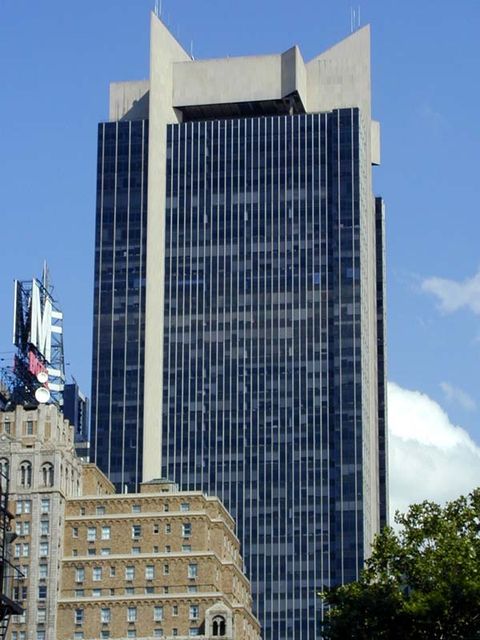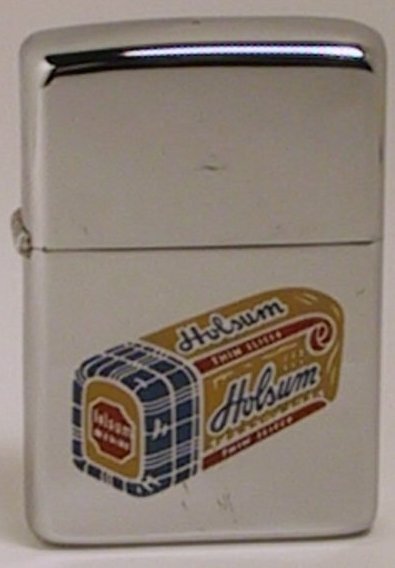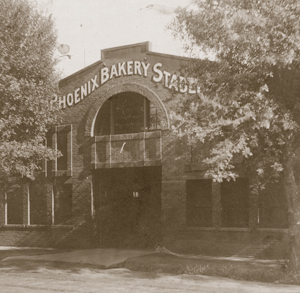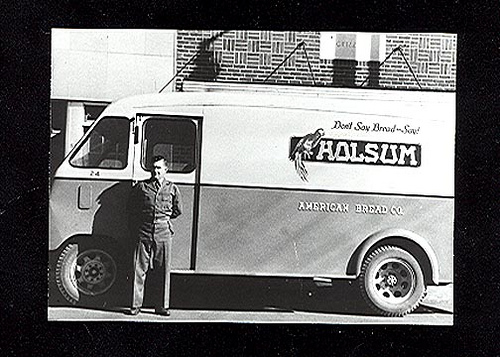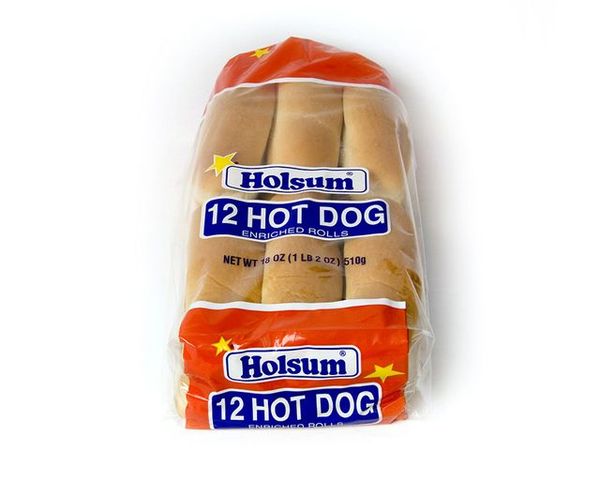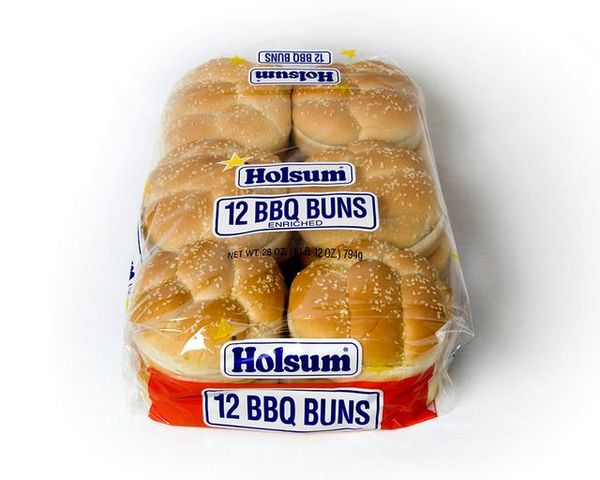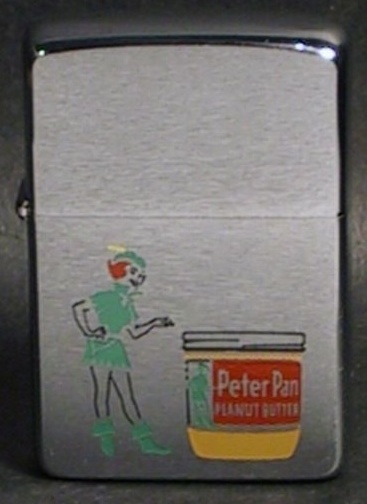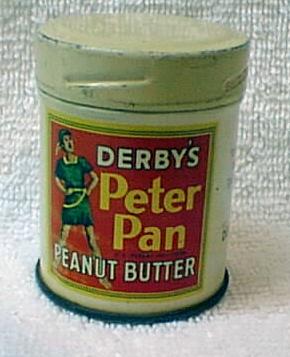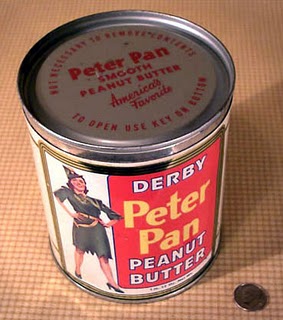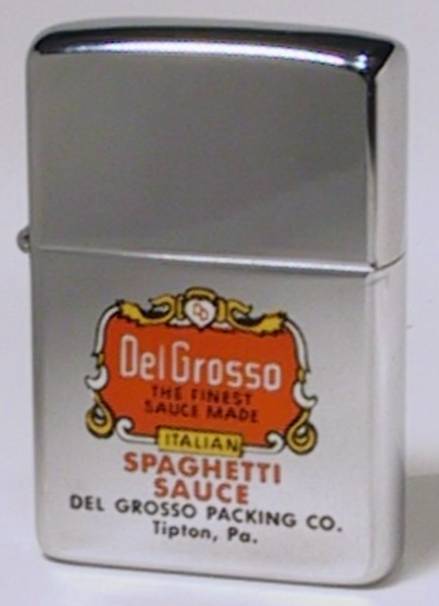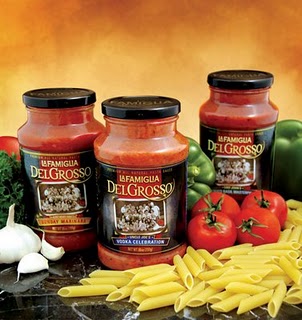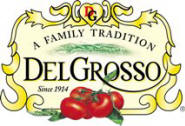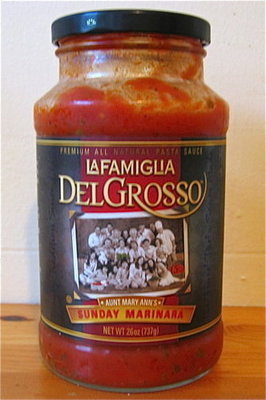Message edited 0:04 - March 1, 2010 by yours_truly
Good day, dear readers forum ZippoCollector.ru! I've been going to the theme of this article, it seemed to me to write a pretty challenging process, but in the end, we managed! :) Today we will, as you have understood from the name of the topic, the Zippo, which was depicted advertising different brands, companies and corporations, whose activities were related to the food industry. Generally, all that relates to the food industry, in fact, very interesting. The food itself - an essential factor of human existence, so to speak on this subject, it is doubly interesting and pleasant! Many companies, of which I will try to briefly describe today, no longer exist, but that does not stop us to know about their past activities. In fact, this kind of "piece" of the history of rapid industrial and agricultural development of the last century America. For collectors of Zippo, advertising food brands on favorite brand lighters - a very popular topic. As always, I hope for your forgiveness and tolerance, dear readers, because the data were collected from multiple sources, some of the companies, material, and, in principle, to be found, especially in the now-defunct company. Be that as it may, in my opinion, this is an extremely entertaining and informative topic! Well, if you do not mind, let's start!
And so, the first Zippo, 1949 - 51 years., About which we are talking today margarine company advertises Mar - Gold:
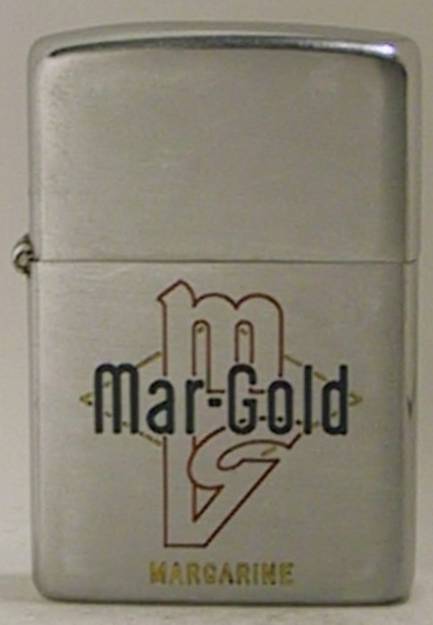

Find more information about this company, I did not, but I came across an excerpt from the Court of Appeal in the case of customs and patent affairs USA November 20, 1969, which describes the case between the two companies, one of which is for us a significant interest in mind that its advertising displayed on the "Queen" of this site. I hope this is the company logo is depicted in lighter. The company Fricks' Foods, Inc. Appeals filed a complaint against the corporation The MAR-GOLD CORPORATION, which acted as a defendant. As I understand it, it was about patents, more about the brand of the company Margello Fricks' Foods, Inc. from - her sound similar to Mar - Gold, which ultimately could lead to confusion. Moreover, the most taunt was the abbreviation corporations Mar - Gold, which was abbreviated as MG in 1948. Corporation produced and sold margarine through wholesalers, who in turn resold margarine retailers. From 1962 to 1965. Corporation Mar - Gold sold 8,619,000 pounds of margarine containers labeled Mar - Gold, the price of which was $ 2,154,750. products actively promoted under the name Mar - Gold in magazines, newspapers, radio and television. Yes! And most interestingly, the company Fricks' Foods, Inc. also produced and sold margarine by the same schemes as Mar - Gold. As a result, the process ended with the victory Mar - Gold, as the court did not see the similarities between the names of brands and corporations Margello Mar - Gold. Most likely arose from the hype - for the competition between the two companies because they produce the same products. Unfortunately, more detailed information on the corporation Mar - Gold I found it was not possible.
The next instance in our review - Zippo 1950 with advertising company New Era, once one of the giants of the production of potato chips:
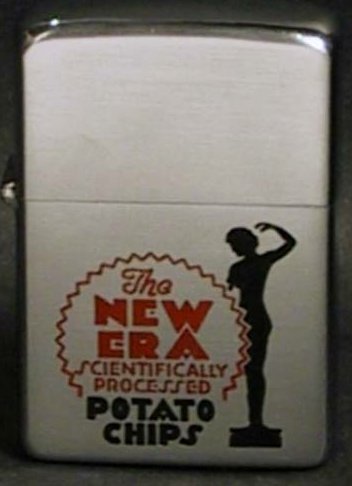

The history of this company is linked with the appearance of such famous brands as Vernor's ginger ale and Faygo Pop. Vernor's ginger ale - ginger ale (for those non-drinkers, ginger ale - sweet highly carbonated drink flavored ginger, used alone or as part of a cocktail with a strong alcohol (vodka, gin, whiskey), in film is used as a visual change of the present beer that artists are not drunk), the oldest American soft drink, invented in 1866 in Detroit pharmacist James Vernor, gave its name to the drink itself. Symbol advertise el became zheltoborody dwarf standing on an oak barrel and decorating factory building on Woodward Avenue.
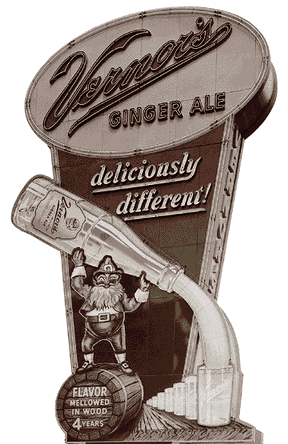
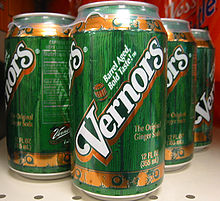
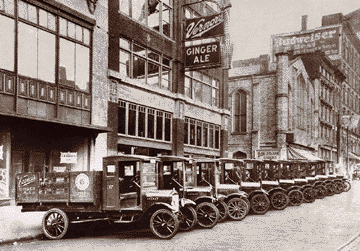

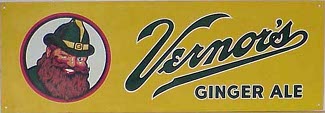

Faygo Pop - a brand of soft drink, invented in 1907 by two brothers, immigrants from Russia, Ben and Perry Feygenson.
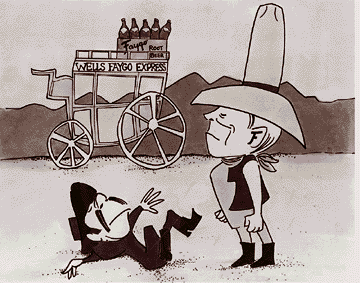

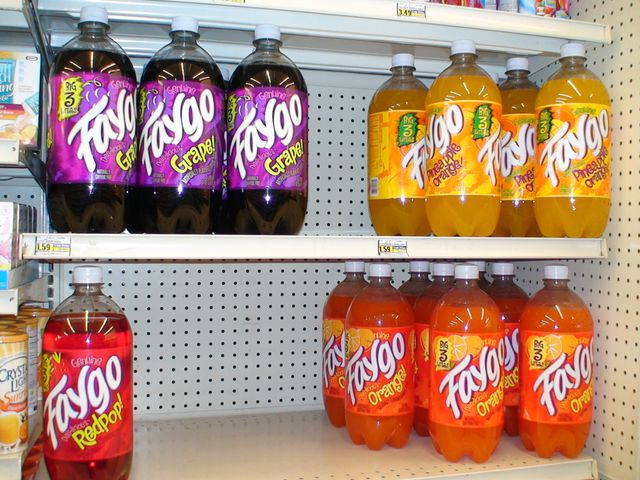

So, do you think, where is the drinks and even more, and here the Zippo? It's just called to dig thoroughly. These two drinks was asking some snack, and what could be better than a salty potato chips? And this is where the struggle between the two giants to produce potato chips in Detroit, which lasted during the 1940s - 1950s. It was developed between now and the existing company Better Made Potato Chips, founded in 1928 by Peter and Cyprian Cross Motseri and accordingly New Era Potato chips, numbered in 1951, four of the plant.
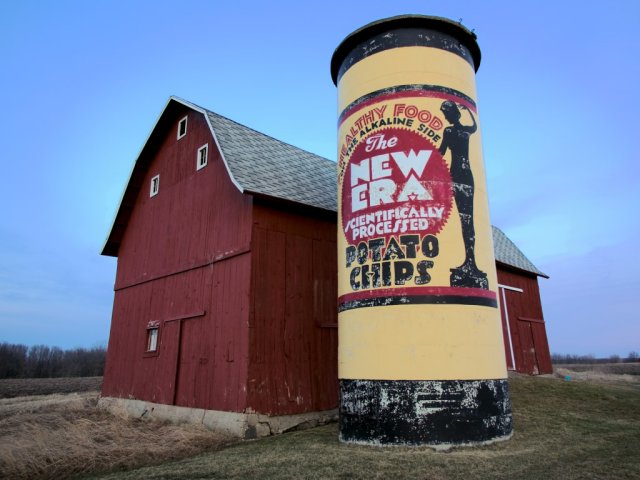

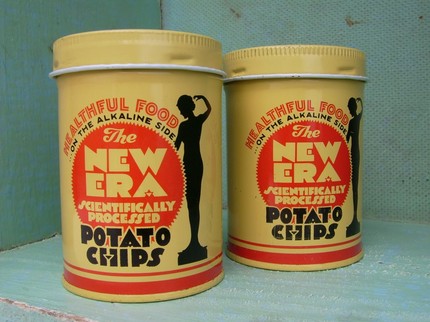

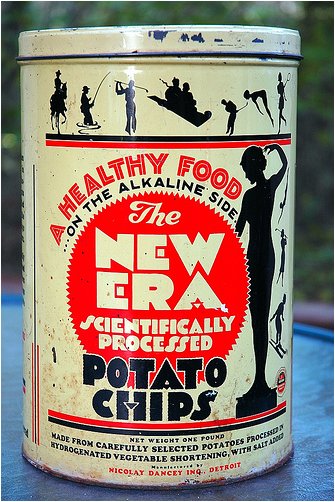

Became a symbol of black silhouette of a slender female figure. Slim figure implied that chips companies will not lead to obesity and completeness. In the photo below, employees are New Era Potato chips inspect the quality of chips on one of the production lines of the factory:
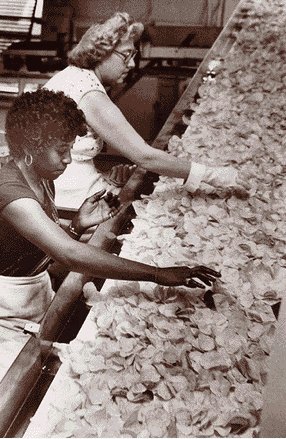
In 1981, New Era Potato chips ceased to exist because of the soaring prices of potatoes, and its once arch rival Detroit Better Made Potato Chips survived and exists to this day.
Now consider the Zippo 1953, which depicts a pack of sugar, advertising company California and Hawaiian Sugar Company, founded in 1906, which lasted from 1921 to 1993. as an agricultural cooperative. In 1993, the cooperative was transformed into a corporation, after they took over the Hawaiian company Alexander & Baldwin, Inc. In 2005, shares of California and Hawaiian Sugar Company acquired the largest "diabetes" giant of American Sugar Refining, better known as Domino Foods, Inc.
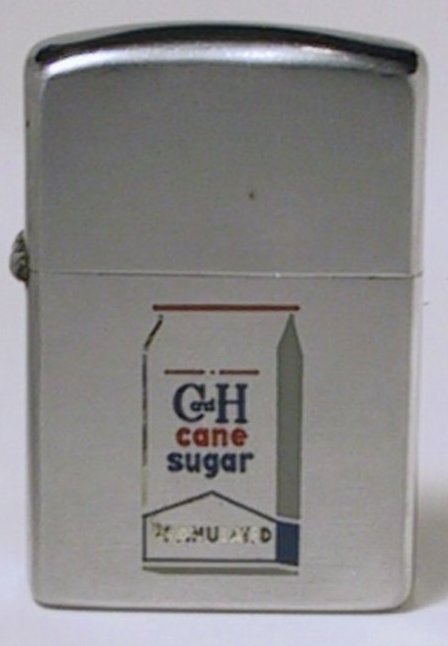

The next character, in fact, could make a separate article, but I will go over the surface history of the brand, which it advertises. And so, Zippo 1953 depicting famous Aunt Jemima - image advertising pancake flour, syrup, and other breakfast products:
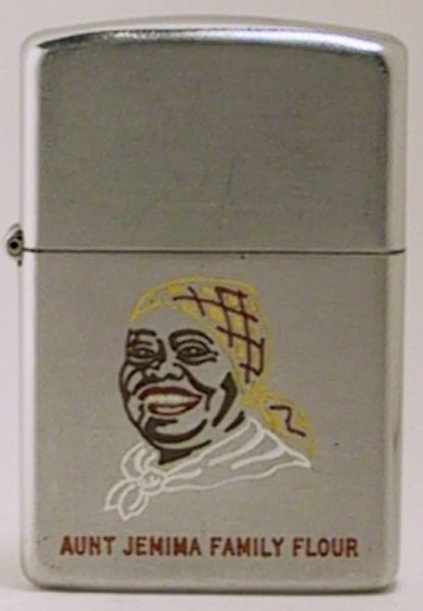

In advertising Aunt Jemima came from blues songs Minstrel Show - American form of folk theater XIX century, where blacks make up a white actor played the comic scenes from the life of blacks, and also performed a stylized music and dance of African slaves.
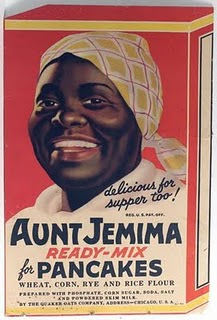
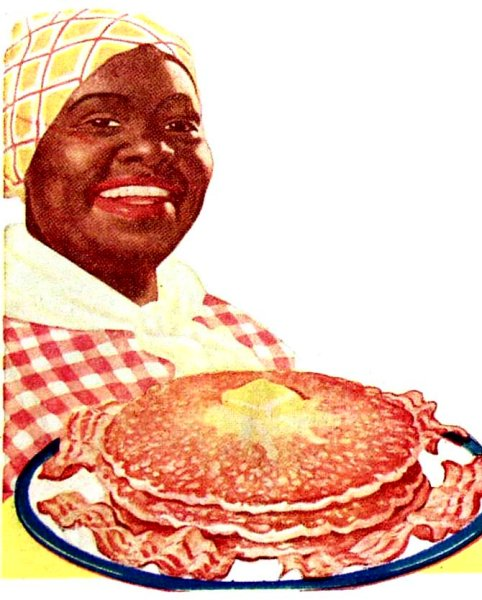


Aunt Jemima living prototype was Nancy Greene, author, activist, supporter of the fight against poverty, one of the first African - American models hired to promote the brand of "Aunt Jemima":
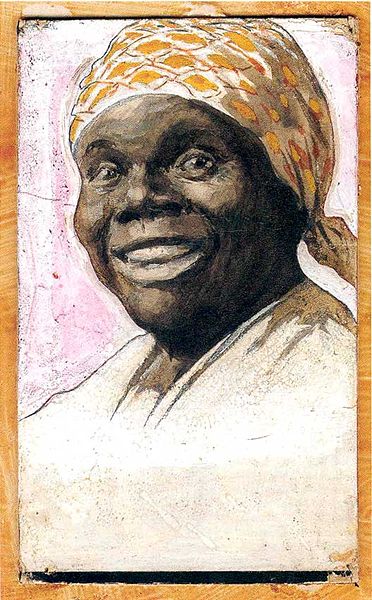

Portrait of Aunt reflect social changes through which America was over long years. In the 1950s. black "Mammy" in a headscarf has been criticized as outdated and negative image of African - American woman. As a result, Quaker Oats Company, which bought the brand in 1926, "improved" look Aunt Jemima: she has made of her young, slender woman with a pearl earring, without a headscarf. However, the dazzling smile and left with a new image Aunt Jemima:


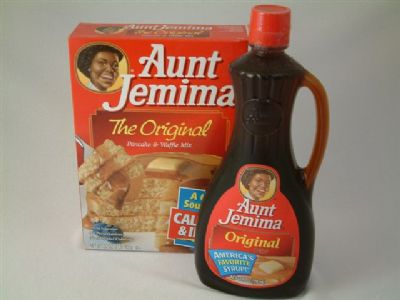

Teapot in the form of Aunt Jemima:
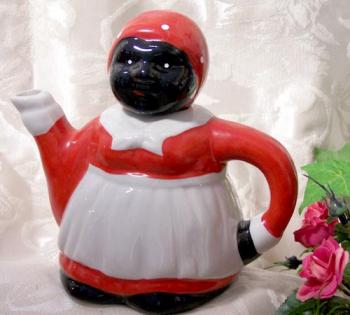

And one Zippo featuring Aunt Jemima http://zippocollector.ru/archi ..... unt-jemima
Next I want to talk about Zippo 1953 with advertising company Birds Eye Frosted Foods, the largest producer of frozen food:
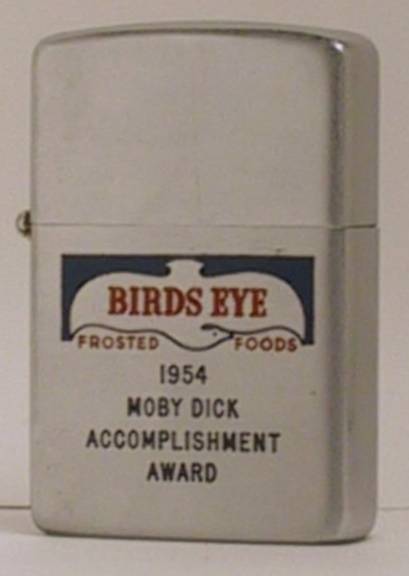

The company is named after its founder. His name was Clarence Birdseye. "When in the middle of the winter we like fresh fruits and vegetables, we should be grateful to Clarence Birdseye for the next great thing - he invented, developed and delivered on a commercial basis method for fast freezing of food products in convenient packaging and without losing the original flavor. By the time the name was Clarence Bersdey brand, his business grew into a multibillion industry.
Clarence Birdseye was born in 1886 in Brooklyn (New York). Taxidermist by profession and a chef by trade, Clarence Birdseye wish his family all year round had fresh food. After Clarence saw the people in the Arctic keep fresh fish and meat, frozen arctic temperatures in the sea, he decided that it was rapid freezing at extremely low temperatures - this is what we need to preserve the freshness of food for subsequent thawing and preparation of months later.
In 1923, seven dollars invested in the purchase of an electric fan, buckets of brine and ice pellets, Clarence Birdseye invented and later improved the packaging of fresh food provoskovannye cartons for freezing under high pressure. Trading Corporation Goldman-Sachs and Company Postum (later - Corporation General Foods) bought the patent for the invention and trademark Clarence Berdsaya in 1929 for $ 22 million. The first frozen vegetables, fruits, seafood and meat began to be sold in 1930 in Springfield (MA) under the name Birds Eye Frosted Foods ®.
Clarence Birdseye himself turned his attention to other areas of interest and invented an infrared lamp, spotlight showcases harpoon whales for marking, and then founded a company to implement their inventions. "
Here is a "vintage advertising" company in 1954:
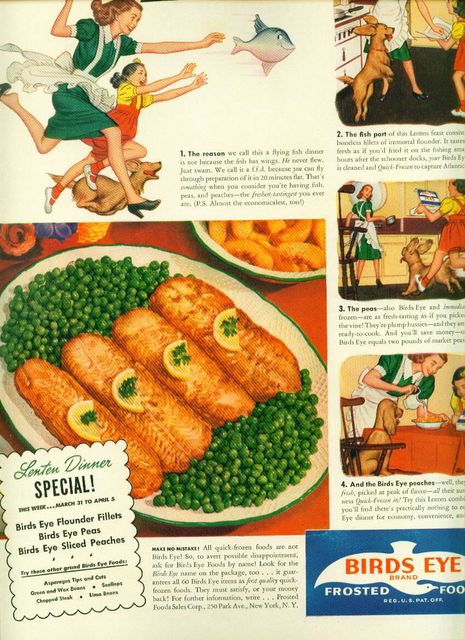

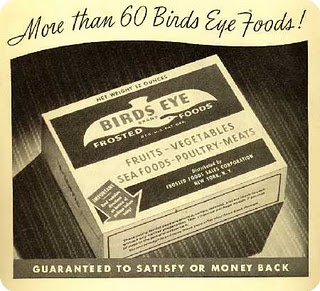

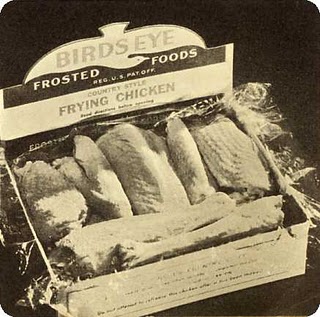

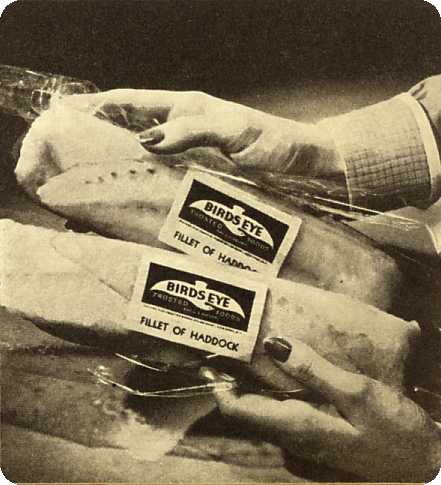

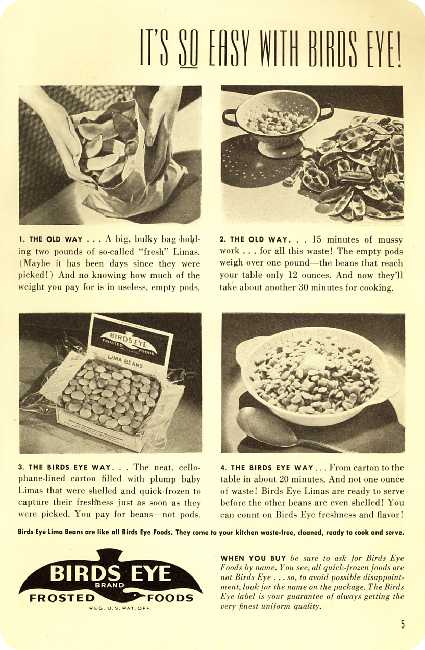

As well as cutting from the newspaper The Shawinigan Standard - July 9, 1941, in which products are advertised Birds Eye Frosted Foods:
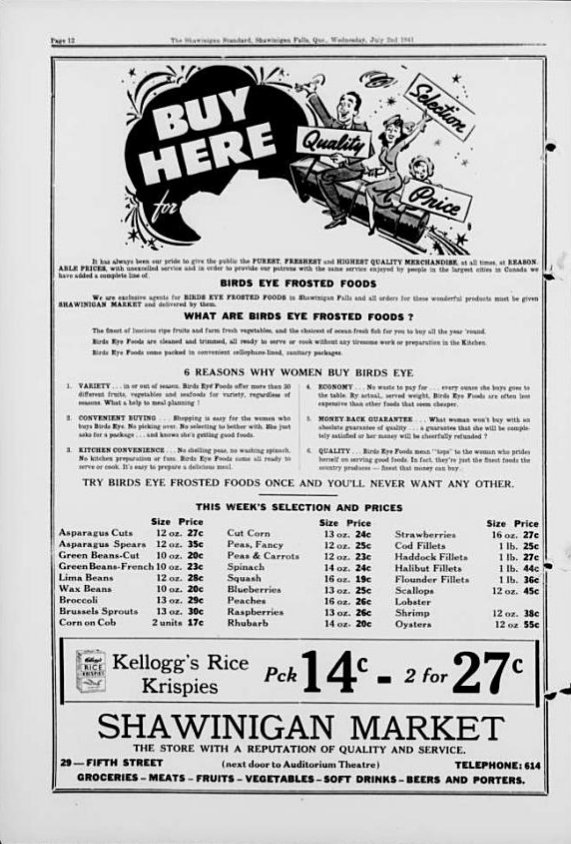

Following instance, which will be discussed - Zippo 1954 with advertising companies Smucker's apple butter, preserves & jellies (The JM Smucker Company), the oldest manufacturer of fruit spreads, creams and desserts in the United States:
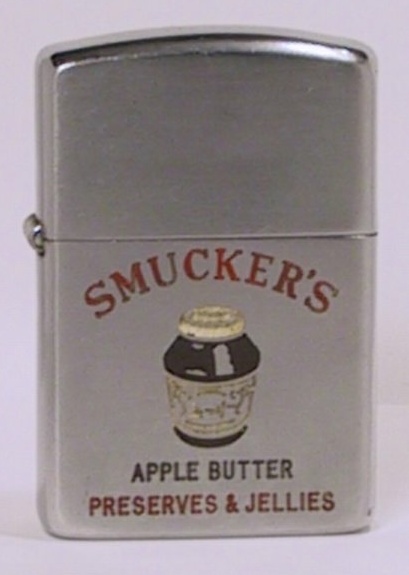

The company was founded in 1897 by Jerome Monroe Smucker, once offered to customers "apple butter", made his father - the founder of the company. According to official data, The JM Smucker Company owns 28 domestic U.S. brands and 7 Canadian international brands. One of the latest to hit him coffee brand Folgers, which The JM Smucker Company has redeemed at Procter & Gamble in early 2008:
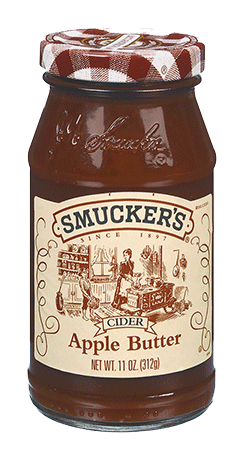
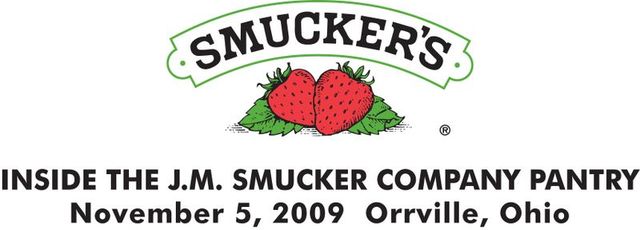

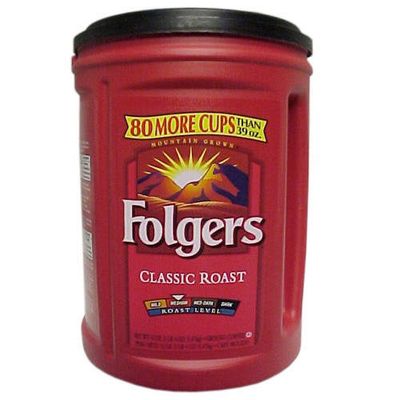

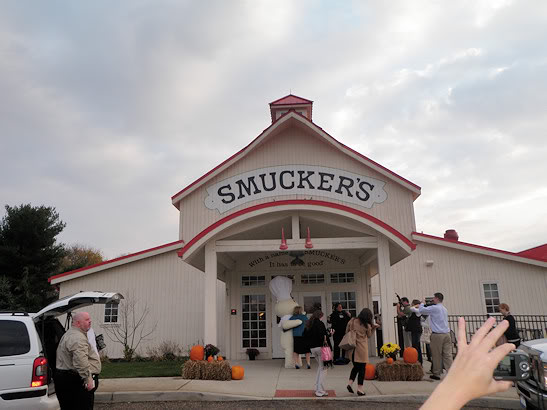

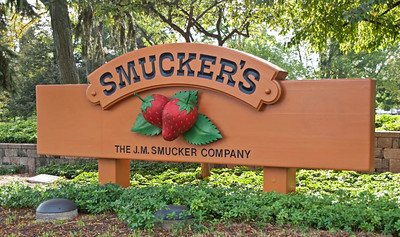

Next the stunning Zippo 1954 Canadian production touts legendary coffee brand Maxwell House, talk about which probably does not make sense. Nothing of this brand they know almost everything!
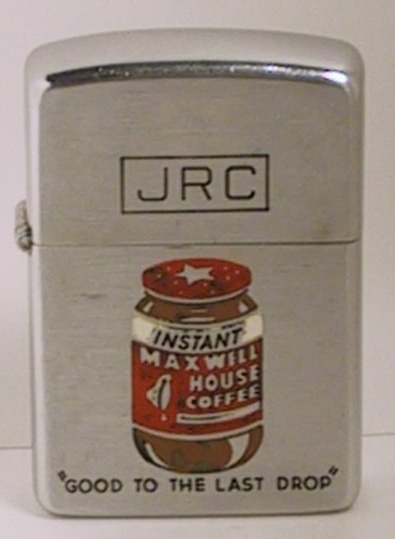

Coffee brand Maxwell House, as well as Jacobs, owns large necks U.S. corporation Kraft Foods Inc., Founded in 1903 by James Kraft (original title - JL Kraft & Bros). Himself Maxwell House coffee was made in 1892 specifically for the Maxwell House Hotel in Nashville, Tennessee. Joel Cheek came up with a new recipe for coffee, which is fast becoming popular with both locals and guests of the city. This coffee was named Maxwell House, in honor of the hotel. 'Good to the last drop' («good to the last drop") - the slogan of the brand, which you see on the Zippo, came after the hotel visited by President Theodore Roosevelt. Tasting coffee, he said - good to the last drop!
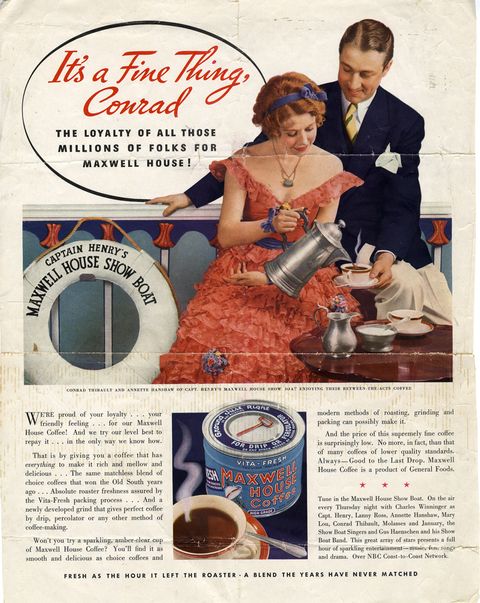

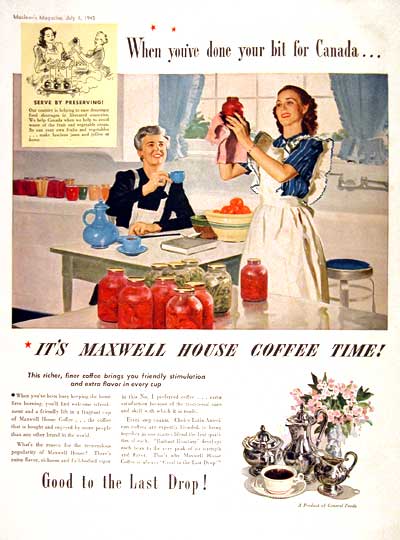

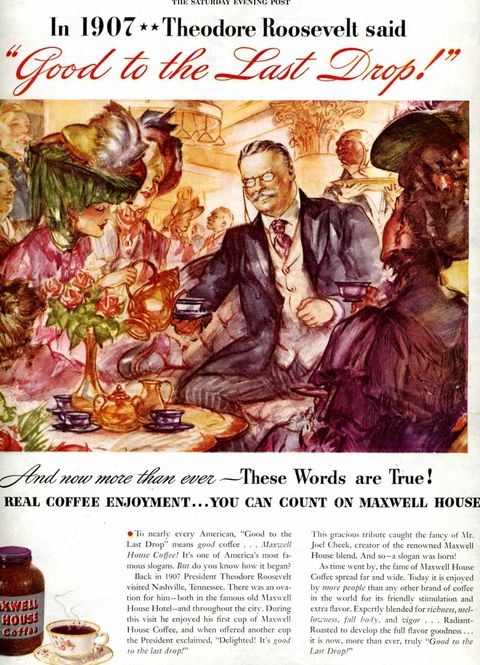

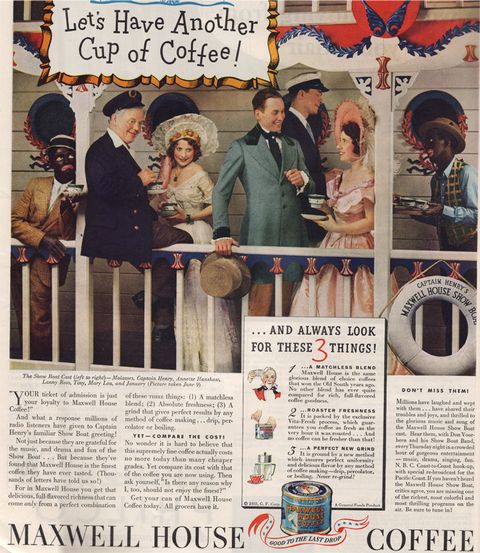

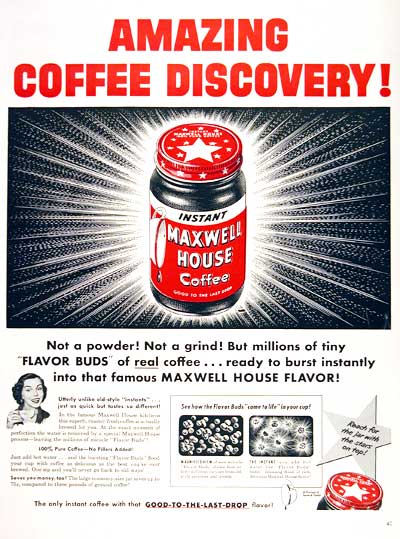

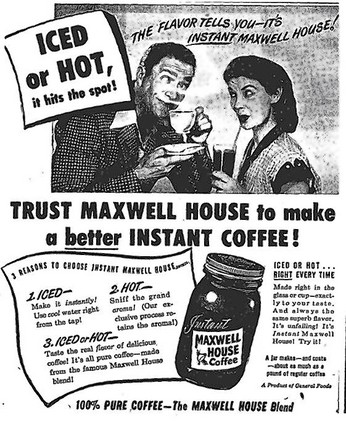
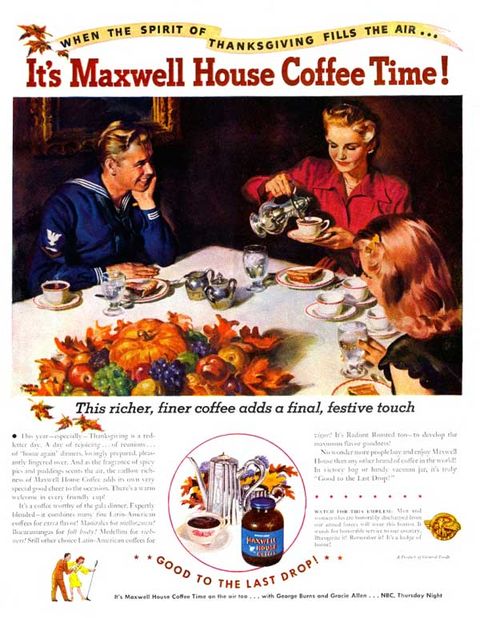

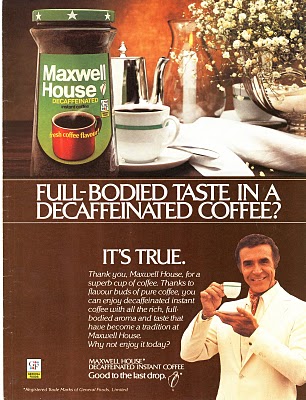

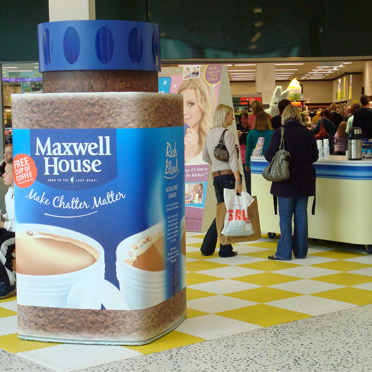

This Zippo slim 1960 series of Town and Country with the advertising of the same coffee Maxwell House, with printed manual image. Apparently, there is a new economical advertising coffee tin - buy and save 10 times!
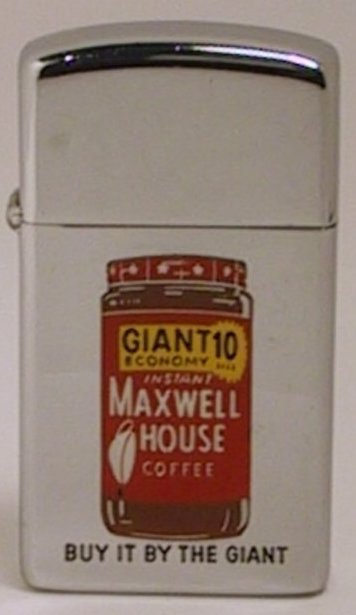

Oh and one more Zippo Slim 1961 also in a series of Town and Country, with a mug of coffee Maxwell House and its famous slogan:
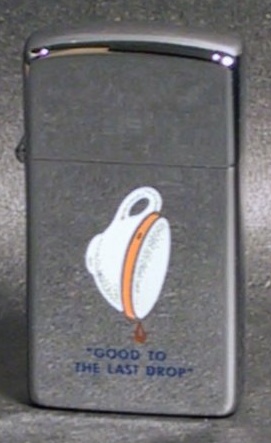
Next Zippo 1957 the company advertises Darigold, Inc. - American cooperative dairy. Founded the cooperative in 1918 as the United Association of dairy farmers and exists to this day:
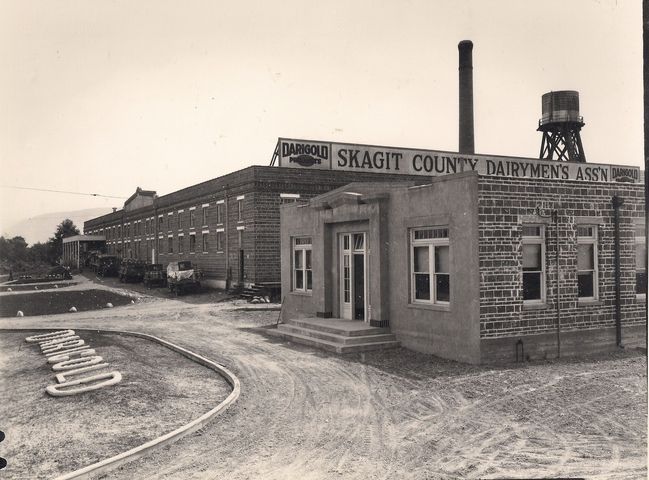

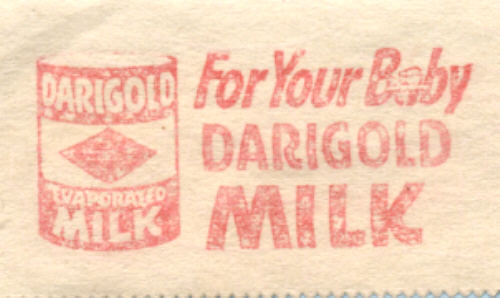

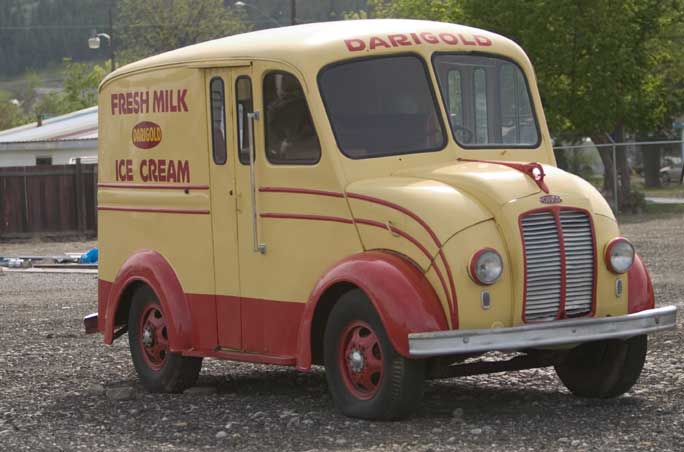

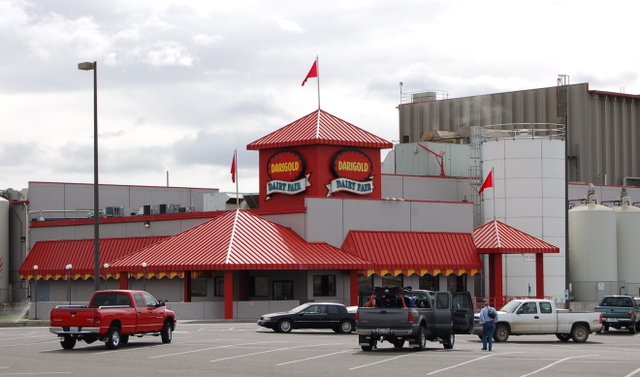

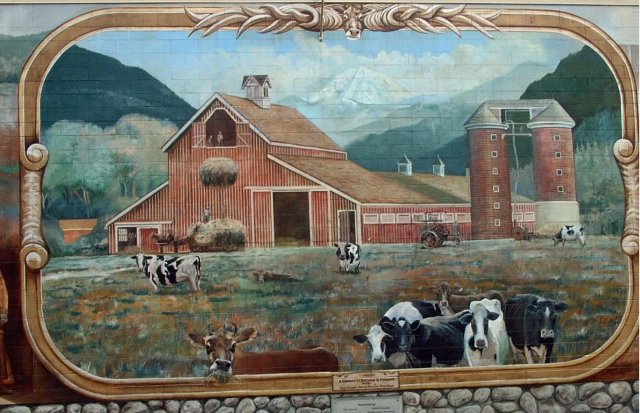

1925
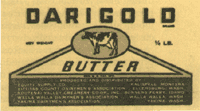
1929
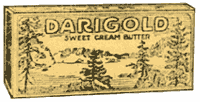
beginning of 1930

mid-1930s

1930 - 1960

1970s

1980 - 1990

today

Oh, yes! I almost forgot:
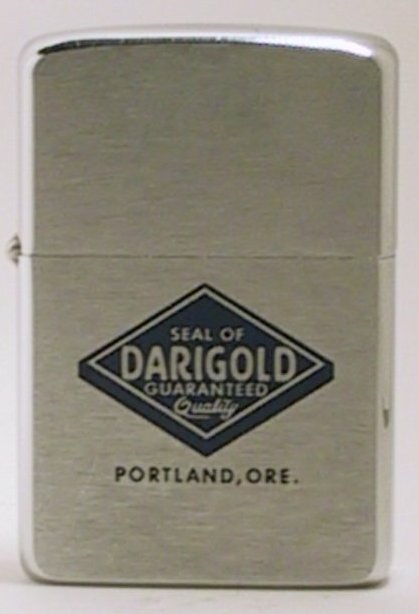

The company, which advertises the next Zippo in 1959 and has remained a mystery to me:
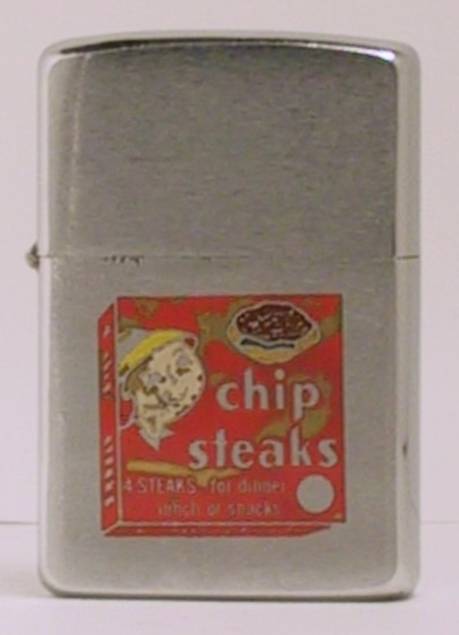

Still, I would venture to suggest that this is a company National Chip Steak Co. Czechoslovakia Dabil William, worked as a butcher in California, once pulled out of a cooler piece of beef, discovered that someone had placed right next to the freezer coil. The meat was solid as granite. Being sure that the meat was spoiled, sad Dabil, put the piece on a cutting machine that one piece of beef has made thin slices. Dabil put them on the counter-mart fridge and noticed that when the meat is thawed, it is not turned black, and the newly acquired juicy red. Buyers have had these pieces, but then came back the next day, wanting to buy another. Dabil was doing this same procedure, but could not figure out what is the secret of success. It turned out that the secret to success lies in a thin cutting meat! Dabil patented its technology and along with his friend William Thomas Carpenter began his business selling steaks. Thus was born the light company National Chip Steak Co. I recall that I could be wrong, and other information about this company, I can not find, just came across an article in 1939 and decided to translate it. In any case, even if I'm wrong, the story, in my opinion, it is still worthy of attention and is a concern.
Moving on to the stage and we have a very beautiful specimen, Zippo 1960 advertising the legendary group Nestle on one side of the lighter, and its world-famous brand - Nescafe to another:
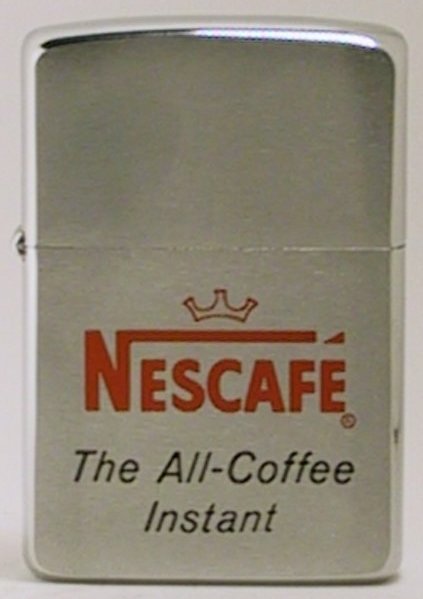

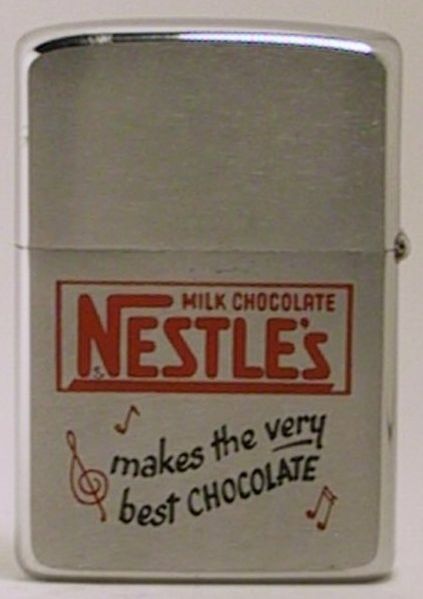

To begin with the start of Nestle. The basis for the emergence of the enterprise, then grew up in the well-known company Nestlé, the Swiss began research pharmacist Henri Nestlé, who was trying to create a substitute for human milk in infant feeding. Using milk, wheat flour and sugar, Nestlé has developed a product called Farine Lactee Henry Nestlé - «Nestlé milk powder." Company for the production and sale of this product was created in 1867.
Aim it is to establish a food for babies who, for one reason or another could not be fed on breast milk, thus partially solving the problem of child deaths from inadequate or improper diet.
The first customer of the new product was a premature baby, the body that do not take no milk, no existing substitutes, and doctors were unable to help the baby. Once through the new product was actually saved the life of a child, "Milk powder Nestle" is widely recognized and a few years successfully sold in most European countries.
Meanwhile, the "Anglo-Swiss company producing condensed milk", founded in 1886 by Americans - Charles and George Page, broadened its product range in the mid 70-ies of the XIX century was to produce breast milk substitutes. The company Nestlé, the owner of which in 1874 was Jules Monner, has taken a step back and launched his own brand of condensed milk. The company remained the main competitors in this area as long as there was a merger in 1905. In 1905, there was a merger, in which the company was formed, called the Nestlé and Anglo-Swiss Milk Company. Already at the beginning of XX century the company owned a factory in the United States, Britain, Germany and Spain.
Nestlé has decided to use a family crest - nests with birds - as a trade mark. On the Swiss German dialect Nestlé means "little nest". One of the sales representatives proposed to replace the socket on the white cross of the Swiss flag, but Nestle dismissed the idea: "I'm sorry, but I can not afford to replace the slot Swiss cross, I can not have different brand names for each country - anyone can use the cross, but no one can take my family crest. "
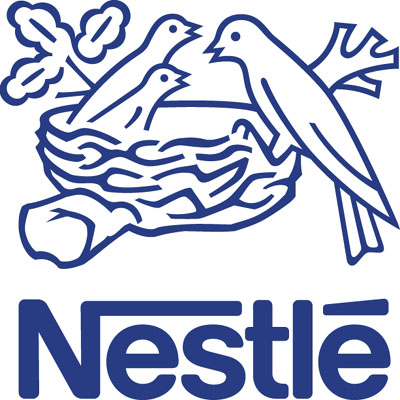

Well, now a little about Nescafe. The period following the end of World War I brought a crisis for the company Nestlé. Stopped receiving government contracts, and people who are used during the war to dry and condensed milk, chose to return to the open as soon as it became available again. In 1921, the company posted a loss for the first time. Rising raw material prices, the postwar lull in the global economy and currency depreciation aggravated the situation.
Nestlé leadership responded quickly to the situation and invited the Swiss banking expert Luis Daplesa for reorganization. Given in the appropriate level of production and sales, as well as reducing unsecured debt, he established the company.
In the twenties, Nestlé was first published outside its traditional range. Production of chocolate became the second most important activity of the company. Появились новые продукты: молоко с солодом, растворимый напиток Milo и в 1938 году - Nescafé. Название «Nescafé» является комбинацией двух слов: «Nestlé» и «café».Этот растворимый порошок произвел мировую революцию в потреблении кофе и стремительно завоевал популярность. В 30-х годах XX века Бразилия обратилась к «Nestlé» с просьбой найти способ сохранения и промышленной переработки кофейных зерен. В течение многих лет Бразилия сталкивалась с проблемой перепроизводства зеленого кофе. Ежегодно огромные запасы кофе пропадали из-за отсутствия технологии переработки и хранения зерен после сушки и первичной обработки.
Макс Моргенталер (Max Morgenthaler) и его коллеги по заказу в течение семи лет искали способ создать «кофейный кубик», который бы сохранял все свойства кофейных зерен и мог выдерживать длительное хранение, а затем превращался в напиток путем добавления воды. 1 апреля 1938 года «Nescafé» был впервые произведен в промышленных условиях. Производство было начато на фабрике в швейцарском городке Орб, в 50 км от штаб-квартиры «Nestlé» в городе Вевей. Начало второй мировой войны отрицательно сказалось на деятельности Nestlé. Прибыль компании сократилась с 20 миллионов долларов США в 1938 году до 6 миллионов в 1939. Нейтральная Швейцария становилась все более изолированной от охваченной войной Европы, и компания перевела значительную часть своих сотрудников в Стамфорд, штат Коннектикут.
По иронии судьбы, вторая мировая война помогла ускорить продвижение новейшего продукта компании - Nescafé. После того, как Соединенные Штаты вступили в войну, Nescafé стал основным напитком американских солдат и офицеров, несших службу в Европе и Азии. К 1943 году ежегодный объем производства достиг миллиона коробок.
Как и во время первой мировой войны, уровень производства и продаж в условиях военной экономики значительно вырос: общий объем продаж подскочил со 100 миллионов долларов в 1938 году до 225 миллионов в 1945. К концу войны руководители Nestlé неожиданно обнаружили, что возглавляют концерн, лидирующий в мировом кофейном бизнесе, а также в других традиционных для Nestlé сферах производства. Как видите, история этих марок весьма интересна и занимательна и, как истинный любитель кофе, я не мог промолчать, уж простите!
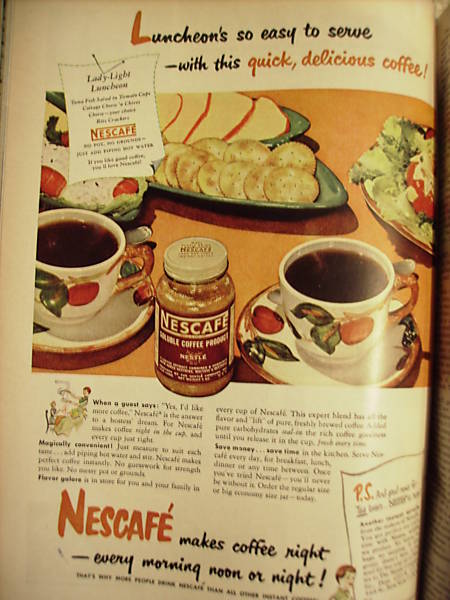

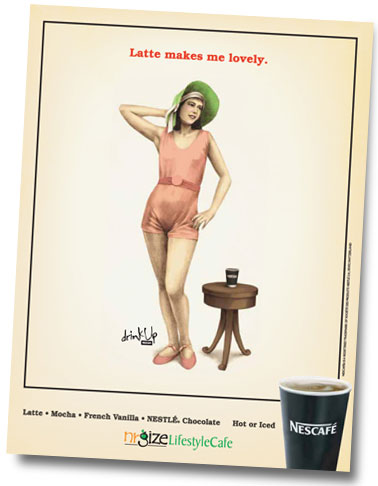

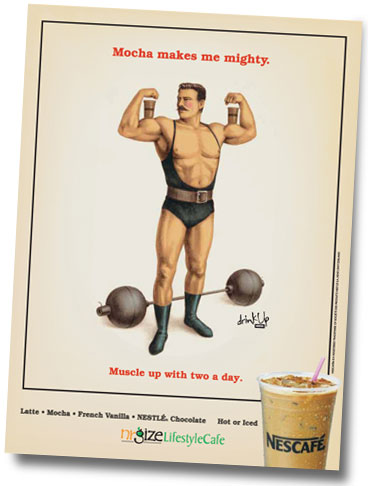

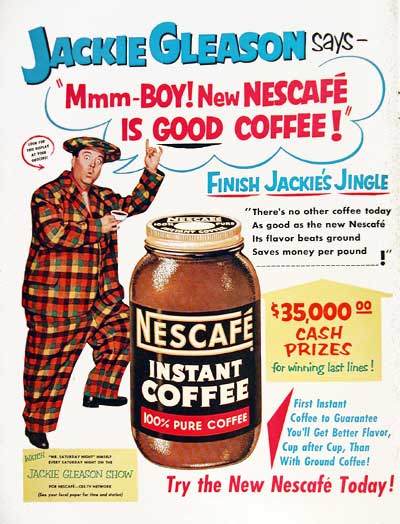

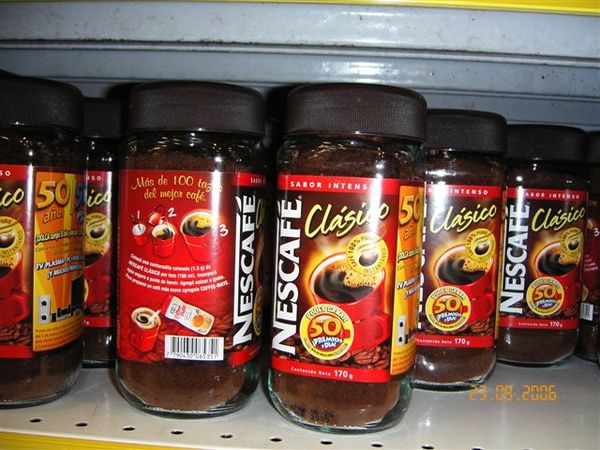

Следующая зиппо 1960, как я понял, рекламирует компанию Golden Flake Snack Foods. И, надеюсь, я правильно понял! Меня немного одолевали смутные сомнения, но теперь я окончательно решил, что именно эту компания данная зиппо и рекламирует! Ну, или продукцию этой компании, как Вам будет угодно! Вернемся к 1923 году! У Моуза Лишкофа и Фрэнка Мошера из Бирмингема, штат Алабама была простая затея - затея, которая спустя более 80 лет, воплотилась из двух джентльменов с мешком картофеля в штат сотрудников, насчитывающий более 1200 человек и оборот в 100 миллионов фунтов картофеля в год! Их картофельные чипсы сегодня известны под брендом Golden Flake. Первоначально компания называлась Magic City Food Products. В 1946 году владелец компании, Хелен Фридман, бывшая жена одного из основателей Фрэнка Мошера, которая внесла значительный вклад в процветание компании, продала ее семейству Башинских. В 1956 году у руля компании стал Слоун Башинский, который выкупил ее у своего отца и своего дяди. Первым его шагом во главе компании стала смена ее названия с Magic City Food Products на Golden Flake, Incorporated. С этого момента у компании началась новая бурная деятельность. В 1977 Golden Flake Snack Foods стала дочерним предприятием Golden Enterprises, Incorporated. Компания существует и по сей день, предлагая своим потребителям картофельные и кукурузные чипсы и другие закусочные пищевые продукты. Here's a story here.
Ну и сама зиппо, собственной персоной:
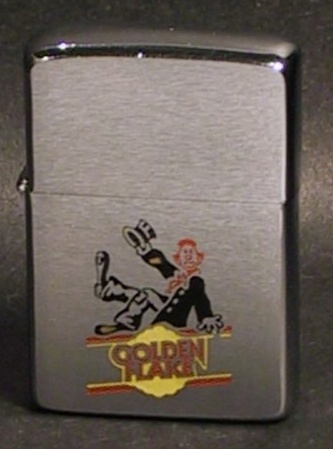

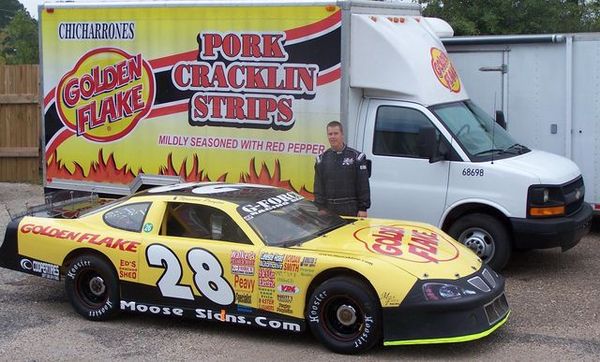

Следующая зиппо 1961 года стала для меня настоящим камнем преткновения. На ней, как вы видите, изображена банка кофе Astor Coffee:
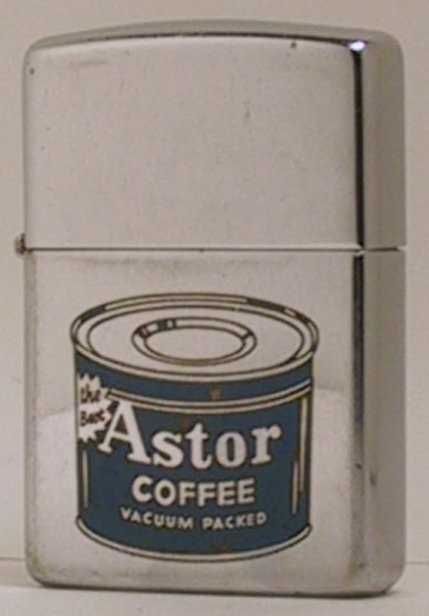

Кстати, наткнулся на коллекцию винтажных банок кофе, среди которых есть и «наша героиня»:
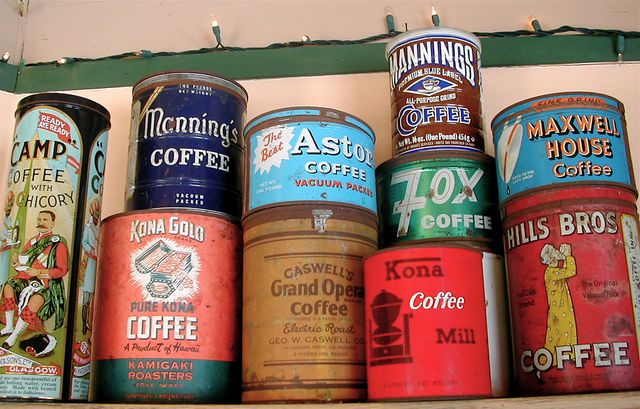

Для поиска материалов по этому бренду кофе, пришлось на два дня прервать работу над статьей (конечно, это не значит, что я целыми днями сидел и искал материал). В итоге, ничего достоверного мне найти не удалось, опять-таки есть только версия. Когда я искал материал, то наткнулся на вот такую «винтажную рекламу» чая и кофе Астор, которые предлагались посетителям этого отеля и в честь которого, по - видимому, эти напитки и получили свое название:
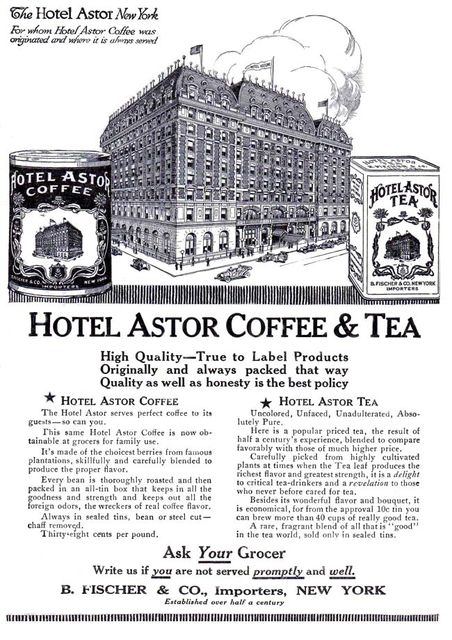

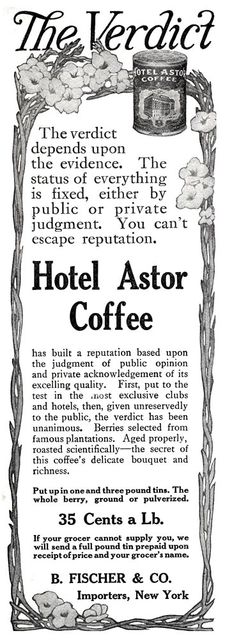
Отель был построен Уильямом Уолдорфом Астором за 7 миллионов долларов. Здание было спроектировано семейными архитекторами Асторов Чарльзом Клинтоном и Уильямом Расселом в стиле французского Ренессанса. Отель был открыт в сентябре 1904 года и располагался на Таймс - сквер в Манхеттене:
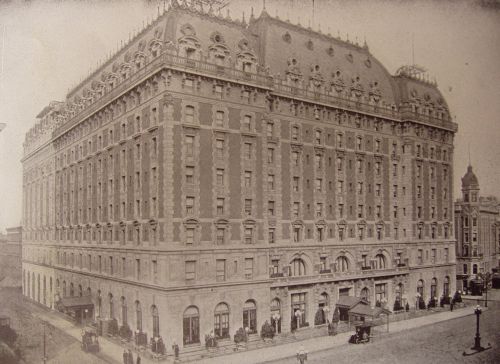

В 1967 году здание было снесено и на его месте сейчас стоит One Astor Plaza - небоскреб, в котором сейчас находятся офисы, магазины, рестораны и т.д.
